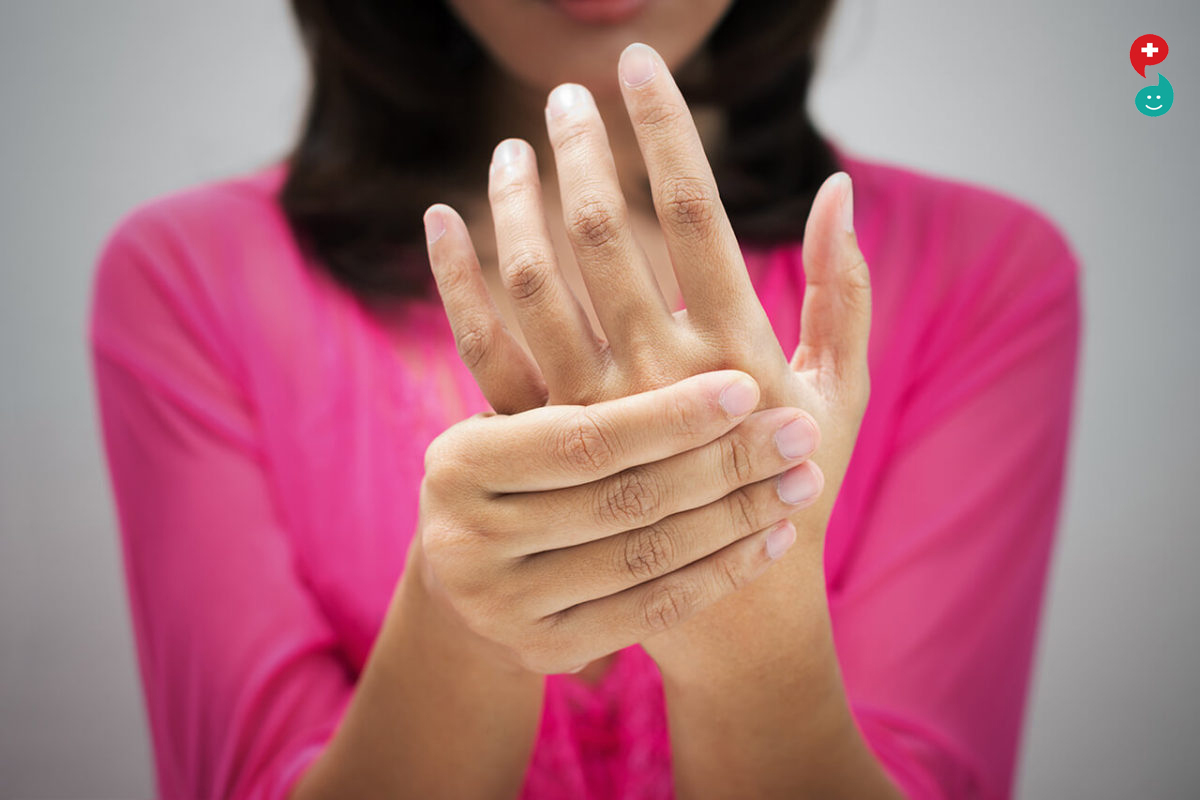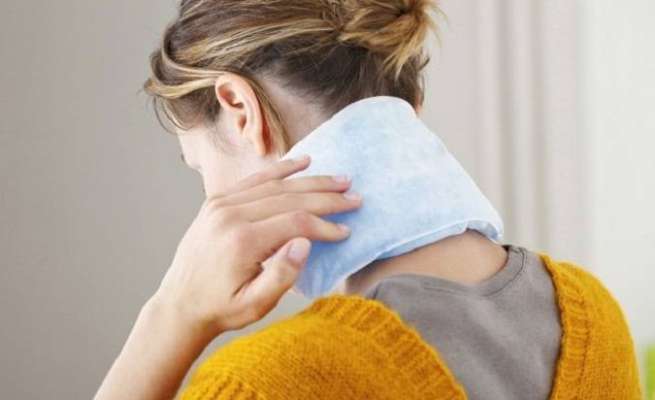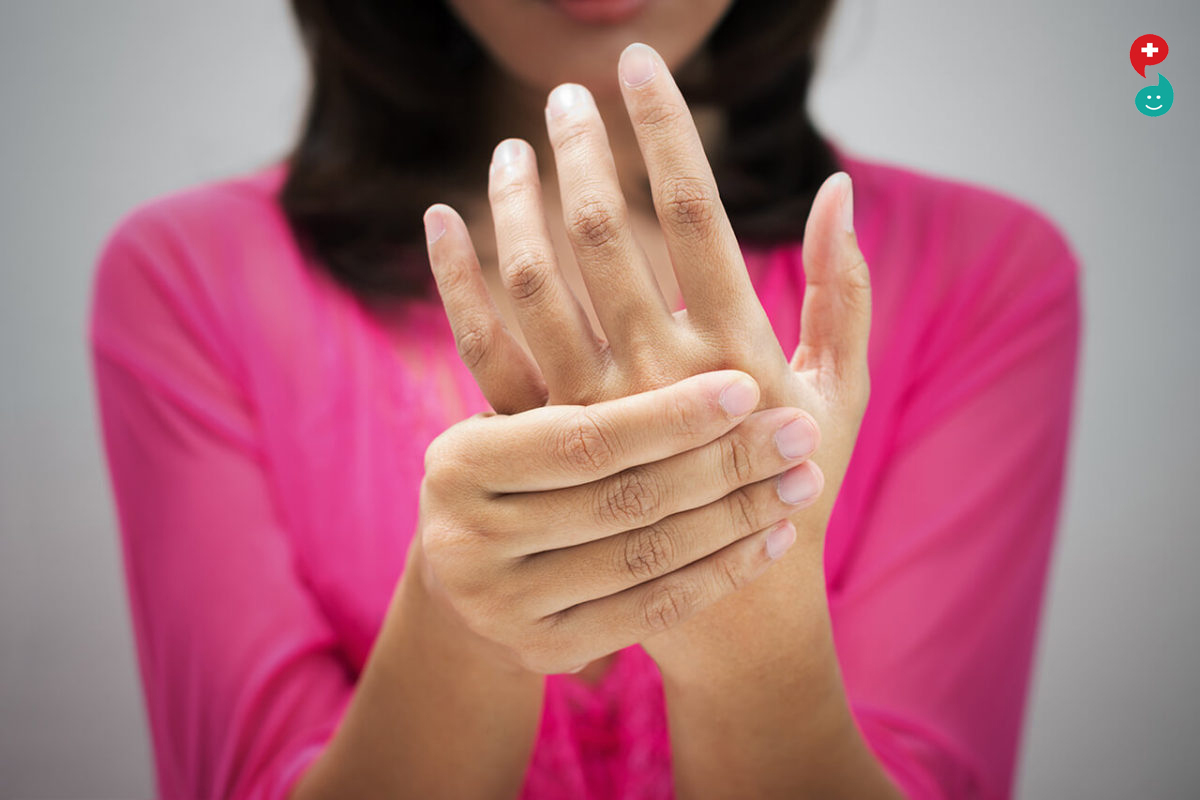Why does joint stiffness occur?
With age, stiff joints become a reality for many people. Years of use can take their toll on joints, muscles, and bones. Many people experience stiff joints just after waking up. Lying down for several hours to sleep reduces fluid amounts. That can make moving joints more difficult first thing in the morning.
Joint stiffness may be mild and only impact your mobility for a brief period of time each morning or after sitting for extended periods of time. The stiffness can also be more severe and impact your mobility.
In some cases, pain and inflammation accompany joint stiffness. This may make walking, standing, or putting weight on your joints painful.
Not all stiff joints are the result of age. Many other conditions can cause stiff joints. These include arthritis, lupus, and bursitis. Lifestyle factors, including diet and weight, can also impact joint mobility.
Keep reading to learn more about possible causes and treatments.
Possible cause #1: Rheumatoid arthritis (RA)
The most common cause of joint pain is arthritis. Rheumatoid arthritis (RA) is one of the most common forms of arthritis, affecting over 1.5 million Americans. Its symptoms typically appear between ages 30 and 60.
RA is a chronic inflammatory disorder. It’s also an autoimmune disease. This means that your immune system attacks healthy parts of your body, such as the lining of your joints. This causes inflammation, pain, and stiffness. Over time, it can also cause joint deformity and bone erosion.
RA has no cure, so its symptoms can’t be eliminated entirely. They can be managed through medication and other treatments. However, once the disease is advanced, little can be done to prevent disability.
Check out: 5 treatments for RA back pain »
Possible cause #2: Osteoarthritis (OA)
Another common form of arthritis is osteoarthritis (OA). OA is sometimes called degenerative arthritis. It affects nearly 27 million Americans. It’s most common in people over age 65.
This type of arthritis results from wear and tear on your joints. Cartilage, the thin tissue that protects the bones in your joints, wears away with use. Over time, the cartilage can no longer protect your bones.
OA can affect any joint in the body, but it most often affects the:
knees
hips
fingers
neck
back
As OA progresses, it can begin to cause symptoms other than stiffness. These include:
pain
swelling
cracking sounds when the joint is in motion
As the condition worsens, your bones may break more easily, and you could develop bone spurs. In advanced stages of OA, the cartilage disappears. Bones rub against other bones in your joint. This can cause extreme pain, stiffness, and disability.
Treatment for OA can help replace some of the lost cartilage and fluid in your joints. Lifestyle treatments aimed at reducing weight and pressure on joints can be effective too. In severe cases, joint replacement surgery may be necessary.
Possible cause #3: Lupus
Lupus is an autoimmune disease like RA. Your body attacks itself, including your organs and tissues. Lupus that attacks your joints can cause stiffness, pain, and swelling.
Lupus is difficult to diagnose because its symptoms mimic many other conditions. It may take several months for a lupus diagnosis while tests rule out other conditions.
Like RA, lupus is chronic. Once you develop it, you will likely experience symptoms of the condition for the rest of your life. There isn’t a cure, but treatments are effective at reducing and controlling symptoms.
Possible cause #4: Bursitis
Bursae are tiny fluid-filled sacs that cushion the bones, ligaments, and muscles in your joints. You develop bursitis when those sacs become inflamed. This condition can cause stiffness and pain in the affected joint.
Bursitis can affect any joint, but it is most common in large joints like the:
elbow
shoulder
hip
Other common sites include the:
knee
ankle
big toe
Bursitis is often temporary, and treatment relies on resting the affected joint for several weeks. This may mean you need to reduce physical activity and keep the joint stationary for periods of time. This allows the bursae to recover and stiffness to resolve.
Learn more: Exercises to relieve hip bursitis pain »
Possible cause #5: Gout
Unlike some other possible causes of joint stiffness, gout comes on suddenly. It may appear while you’re asleep, which may make the joints especially painful when you wake up.
Severe, sudden episodes of pain and tenderness in joints characterize gout. Gout can impact any joint. The big toe is frequently the first joint to experience symptoms.
Gout is a type of arthritis. It affects men more often than women, but a woman’s risk for developing gout increases after menopause. Most people will deal with periods of gout symptoms for the rest of their life, but symptoms are treatable.
Possible cause #6: Bone cancer
This is rarely a cause for joint pain and stiffness, but it is a possibility. People with bone cancer may experience joint pain or bone pain. You may also experience swelling or sensitivity near a bone.
Not everyone will have pain, which is why bone cancer may advance and begin causing other symptoms before it’s discovered.
Cancer is treatable, but the outcome depends on several factors. These factors include the size, location, and type of tumor. Treatment options for bone cancer include radiation, chemotherapy, and surgery.
Learn more: Bone cancer »
How to find relief
The best way to ease joint stiffness depends on what’s causing it in the first place. If stiffness lasts longer than 30 minutes after you wake up or if symptoms are getting worse, it’s important you seek medical attention.
Diagnosing the underlying problem will help you and your doctor determine the best way to ease stiffness and stop other associated symptoms.
Hot or cold compress
Both temperature extremes may be beneficial for stiff joints.
Apply a cold compress or bag of ice to your stiff joint for 15 to 20 minutes several times a day. This can help reduce inflammation or swelling and ease the joint into movement. It can also dull pain receptors so you experience less pain.
Heat is also therapeutic to joints and muscles. Use a heating pad, hot water bottle, or warm water from a shower or bath to relax muscles and increase circulation.
Over-the-counter (OTC) medication
Many mild symptoms of joint pain can be relieved by OTC medicines. Nonsteroidal anti-inflammatory drugs (NSAIDs) are the most commonly used medication for arthritis. Generic names for NSAIDs include aspirin, ibuprofen, and naproxen.
Steroids
If inflammation and swelling in the joint cause joint stiffness, steroids may be a treatment option. Swelling and inflammation are common with arthritis. Corticosteroids reduce inflammation. When inflammation decreases, joint pain and stiffness decrease too.
Steroids may not be beneficial for people with advanced arthritis. In some cases, relief may be short-lived, and future steroid injections may not be as effective.
Exercise
Exercise and physical therapy may help increase joint mobility, which can reduce stiffness.
It’s also a great way to lose weight or maintain a healthy weight. Carrying around excess pounds can increase your risk for certain conditions that cause joint pain and stiffness.
If you’re unsure how to begin exercising or are having difficulty with movement, talk with your doctor or a trained physical therapist. Exercise is an easy way to relieve pain and stiffness, but you can aggravate certain conditions if you don’t take precautions before beginning an exercise plan.
Neck pain and stiffness can give you a harrowing time. From children to aged people, the condition is a common problem that can affect all and sundry. In addition to the pain and discomfort, the condition also restricts the head movement. The neck bones and muscles are important as they not only give support to the head but also ensures its free and unrestricted movement.
Stiff neck and neck pain can be an amalgamation of various factors such as -
Our professional commitments often demand spending hours before the computer. The sedentary lifestyle is the main wrecker in chief, giving rise to many health complications, with neck pain and stiffness being one amongst them. Sitting in one position for long often results in muscle pull (tension) and strain. The muscle tension can also be an outcome of incorrect sleeping posture.
Neck injury and inflammation sustained during an exercise or due to an accident can also result in neck pain.
Neck injury followed by pain and stiffness can also be an outcome of Whiplash (a condition where a person suddenly jerks the head).
Stiffness and neck pain can also be triggered by medical conditions such as Meningitis, Rheumatoid Arthritis (of the neck), Heart attack, Fibromyalgia(muscular pain particularly in the shoulder and neck area), Cancer (of the spine), Spondylosis, and Spinal stenosis, to name a few.
Seek medical assistance in case
The condition aggravates and persists for long.
The pain and stiffness are sudden and unexplained.
Pain that slowly moves down the arms and legs.
In addition to the neck pain and stiffness, a person complains of a headache, nausea, vomiting, fever, difficulty in eating food, a bowel disorder.
A lump (in the neck) accompanied by pain and stiffness needs immediate and thorough investigation.
Diagnosis and treatment
Neck pain and stiffness are often diagnosed by
Physical examination.
A lumbar puncture can also aid in the diagnosis.
Imaging tests such as X-rays, MRI, CT scans, Electromyography
Blood tests.
Depending on the severity, a doctor decides upon the course and mode of treatment
The use of ice packs or heat pads (avoid very high temperature) on the affected area every 2-3 hours (for 15-20 minutes) can provide great relief.
Gentle massaging can go a long way to relieve the pain and stiffness. It only helps to improve the blood circulation.
Neck exercises and stretching play a pivotal role in strengthening the neck muscles, thereby reducing the pain and stiffness. However, in an endeavour to achieve maximum results, do not overdo yourself.
Medicines such as Nonsteroidal anti-inflammatory drugs (NSAID), Tylenol, Advil, corticosteroid injections, come in handy in case of severe pain and inflammation.
Use of a neck collar provides support to the affected area.
Surgery may be recommended (very rare) in the case of serious complications.
Some patients also benefit from Acupuncture and Chiropractic (alternate medicines).
सांध्यानमधील कडकपणा
सांध्यानमधील कडकपणा लक्षण
खालील वैशिष्ट्ये सांध्यानमधील कडकपणा दर्शवितात:
- जोड्यांच्या हालचाली करताना वेदना
- जोडांच्या हालचाली कमी
सांध्यानमधील कडकपणा चे साधारण कारणे खालीलप्रमाणे आहेत:
- ऑस्टियोआर्थराइटिस
- एंकिलोझिंग स्पॉन्डिलायटिस
- संधिवात
- दीर्घ काळापर्यंत विश्रांतीच्या काळात
खालील घटक सांध्यानमधील कडकपणा ची शक्यता वाढवू शकतात:
- तंबाखूचा धूम्रपान करण्यासाठी एक्सपोजर
- हार्मोनल बदलल्यामुळे महिलांमध्ये सांधे अधिक महत्त्वपूर्ण असतात
- जंतुसंसर्ग
सांध्यानमधील कडकपणा टाळण्यासाठी
होय, सांध्यानमधील कडकपणा प्रतिबंधित करणे संभव आहे. खालील गोष्टी करून प्रतिबंध करणे शक्य आहे:
- नियमित व्यायाम करा
सांध्यानमधील कडकपणा ची शक्यता
प्रकरणांची संख्या
खालीलप्रमाणे जगभरात प्रत्येक वर्षी सांध्यानमधील कडकपणा प्रकरणांची संख्या दिसली आहेत:
- अत्यंत सामान्य; 10 दशलक्ष प्रकरणे
सामान्य वयोगटातील जमाव
- सांध्यानमधील कडकपणा कोणत्याही वयात होऊ शकतो.
सामान्य लिंग
- सांध्यानमधील कडकपणा कोणत्याही लिंगात होऊ शकतो.
प्रयोगशाळेतील चाचण्या आणि प्रक्रियांचा वापर सांध्यानमधील कडकपणा शोधण्यासाठी केला जातो:
- क्ष-किरण: जोडांचा विकृती निदान करणे
उपचार न केल्यास सांध्यानमधील कडकपणा च्या अधिक समस्या गुंतागुंतीचा होते?
होय, जर उपचार न केल्यास सांध्यानमधील कडकपणा गुंतागुंतीचा होतो. सांध्यानमधील कडकपणा वर उपचार न केल्यास, उद्भवणार्या गुंतागुंती आणि समस्यांची सूची खाली दिली आहे:
- सांधे विकृती
सांध्यानमधील कडकपणा साठी स्वत: घ्यावयाचि काळजी
खालीलप्रमाणे आत्म-काळजी किंवा जीवनशैलीत बदल सांध्यानमधील कडकपणा च्या उपचार किंवा व्यवस्थापनास मदत करू शकतात:
- संयुक्त सूज, वेदना आणि थकवा कमी करण्यासाठी भरपूर विश्रांती घ्या.
- अभ्यास शिल्लक व्यायाम: स्नायूंना निरोगी आणि मजबूत ठेवण्यासाठी आणि सांधाची लवचिकता राखण्यासाठी.











